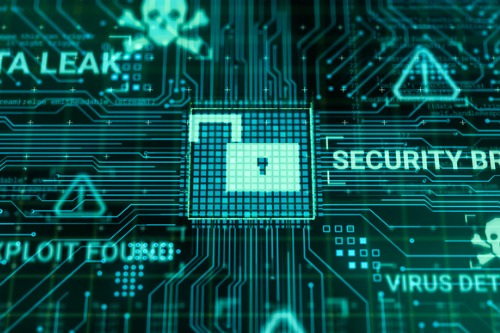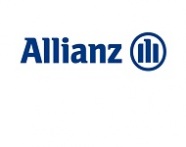Insurance and the evolving cyber landscape

Cyber insurance is still very much an emerging area for the industry since its first appearance in the 1990s but recent socio-political events are shaping the types of attack being perpetrated and, as a result, companies’ cybersecurity requirements.
In this article we consider some key factors shaping the future of cyber insurance; the most prevalent types of attack being deployed by criminals; and guidance for businesses in combatting cyber threats.
External influences
COVID 19
The COVID lockdown in March 2020 forced the large-scale move towards working from home, presenting new opportunities for cyber criminals. The rapid geographical spread of employees resulted in the wide distribution of office IT equipment, thereby introducing thousands of new routers, networks and personal WiFi connections. This, coupled with remote workers using their own (noncorporate) devices, led to increased exposure across companies’ IT ecosystems. According to government data, 2020 saw a peak in cyber incidents, with 46% of businesses identifying an attack.
Ransomware
Incidence of ransomware also accelerated during the pandemic, with criminals operating phishing scams involving information about vaccines or government financial assistance. Perhaps unsurprisingly, ransomware ranked as the top cyber exposure of concern in the 2022 Allianz Risk Barometer.
Additionally, the various lockdowns prompted an increased reliance on video conferencing apps both for individuals and businesses. One which gained major prominence was Zoom – at the time a relatively underdeveloped and cost-free application. Companies started using the app en masse for business purposes and Zoom became a household name almost overnight, increasing from 10 million daily participants in 2019 to 300 million by October 2020.
Security concerns
However, since Zoom was never designed specifically for corporate use, concerns soon surfaced around security vulnerabilities, such as the potential for any individual being able to gain access to meetings (known as ‘Zoombombing’). Larger organisations with more mature security postures were less at risk, having processes in place for testing software or preventing the unauthorised installation of software.
Cyber incidents can have huge repercussions for organisations, from financial loss to business disruption, reputational damage and fines. Given predictions that flexible working is set to continue, it’s concerning that more than half of firms believe their exposure to attack has increased due to working from home arrangements.
With many households retaining their dual function as both home and office at least some of the time, businesses will need to consider ways to improve their cyber security posture and minimise the risk of attack.
Artificial Intelligence (AI)
Cyber criminals are exploiting AI for cyber-attack purposes, leveraging its ability to identify patterns in behaviour. For example, hackers can use machine learning (ML) – a form of AI - to support password guessing. By using ML, including something known as generative adversarial networks (GANs), it’s possible to analyse a vast dataset of passwords and generate likely password variations. So-called ‘bad actors’ can use AI to create personalised ‘spear phishing’ messages which target C-suite executives (CEOs, CCOs, etc) and either seek to obtain confidential information, or install malware on a device.
But AI can actually be used positively to thwart cyber criminals. Whereas monitoring cyber threats used to be an involved and time-consuming manual task, sophisticated AI systems are able to expedite the process without experiencing human fatigue and susceptibility to error. They achieve this by processing huge amounts of data to detect malware, run pattern recognition and automate defence responses.
Internet of Things (IoT)
It’s estimated that by 2030, there may be as many as 50 billion IoT connected devices globally. 5 As more smart devices become connected in the Internet of Things, it will heighten exposure to cyber risk, especially where connected devices might have lower levels of security.
For instance, criminals may be able to gain access to an organisation’s IT systems through employees’ mobile devices or the company’s connected kettle. Computerised controls, including alarms, environmental controls and CCTV can provide a back door for cyber criminals because they often utilise cost-effective but non-supported operating systems.
Unsupported systems can be open to security threats and provide easy access to computer systems, bypassing firewalls and enabling hackers to gain access to a business’s private or confidential data.
Russia-Ukraine war
At time of writing, there have been no confirmed Ukraine-Russia related attacks on the UK. However, there are fears that any heightened cyberactivity against Ukraine could signal an elevated threat for allies. Previously, in June 2017, the NotPetya attack on Ukraine spread beyond its borders and impacted upon some UK operations.
It’s thought to be the most costly cyber-attack in history. More recently, a series of distributed denial of service (DDoS) attacks in February, which attacked Ukrainian banking and defence websites, was attributed to the Russian military intelligence agency GRU.6 Such attacks have led the UK’s National Cyber Security Centre (NCSC) to issue guidance for organisations on how to improve their cybersecurity resilience.
Outsourcing of IT/security
Another worrying trend is the amount of attacks on managed service providers (MSPs). Many companies outsource their IT services to an MSP, not considering that even MSPs themselves are not immune to cyber threats. In fact, since MSPs may support hundreds of customers, criminals see this as a way of attacking multiple companies via a single vector. .
The SolarWinds attack in 2020 was one such example, when hackers broke into the company’s systems and ended up impacting around 20,000 of its customers. The attack was described as ‘the largest and most sophisticated attack the world has ever seen’. It’s important for organisations to undertake due diligence when selecting an MSP, such as understanding what security mechanisms they deploy, how they back up customer data and whether they have ransomware insurance, to name just a few.
Implications for the insurance industry
The global cyber insurance market is forecast to grow to $20.6bn (£15bn) in GWP by 2025, but the industry is very much still learning as the cyber landscape continually evolves.
Cyber carriers are receiving more claims, due to both higher take-up of cyber insurance and the number of incidents. Allianz Global Corporate & Specialty saw claims rise from almost 500 in 2018 to more than 1,100 in 2020.
The recent surge in ransomware claims has driven up cyber insurance pricing by 92%. Cyber threats, including ransomware, are becoming increasingly more complex. Therefore, insurers will want to be assured that policyholders are taking appropriate steps to equip themselves against cyber threats.
These include use of multi-layered protections like Virtual Private Network (VPN) technologies in conjunction with multi-factor authentication (MFA). This helps to verify the identity of users with a second factor before granting access to corporate systems and applications.
Without proper use of MFA, it can be fairly simple for even novice cyber criminals to gain unauthorised access.
How can a business best mitigate against cyber security threats?
In addition to the measures mentioned above, organisations can strengthen their security posture in a number of ways, including:
- training employees on how to recognise and report a potential breach
- implementing robust password security and considering the use of password manager tools
- using data encryption methods and ensuring data is backed up
- use of network segmentation; ensuring users only have access to relevant systems. Also using methods such as firewalls or airwalls (which securely connect anything, everywhere) to prevent an attack from spreading
- having a documented process for patching, including factoring in how quickly these can be implemented following a critical update
- maintaining a list of trusted applications and software, ensuring that anything not on the list cannot be used or installed
- allocating budget for IT security and infrastructure spend; the cost of this would be dwarfed by the repercussions of any cyber security breach
- having a current, robust business continuity in place
Authored by Allianz
About Allianz
Allianz Insurance is one of the largest general insurers in the UK and part of the Allianz Group, a leading integrated financial services provider and the largest property and casualty insurer in the world.
The mission of Allianz Insurance is to be the outstanding competitor in our chosen markets by delivering products and services that our clients recommend, being a great company to work for and achieving the best combination of profit and growth. We aim to achieve this by putting the customer at the heart of everything we do.
Allianz is able to offer customers a wide range of products and services including home and motor and commercial insurance with full range of products and service for sole traders' right up to large commercial organisations.
Allianz Insurance employs over 4,500 people across a network of 20 offices in the UK and the company’s Head Office is situated in Guildford, Surrey. Our heritage and financial strength help make Allianz what it is today; a safe and trusted partner. Over 40 FTSE100 companies partner with Allianz. youTalk-insurance sharing Allianz Insurance news and video

